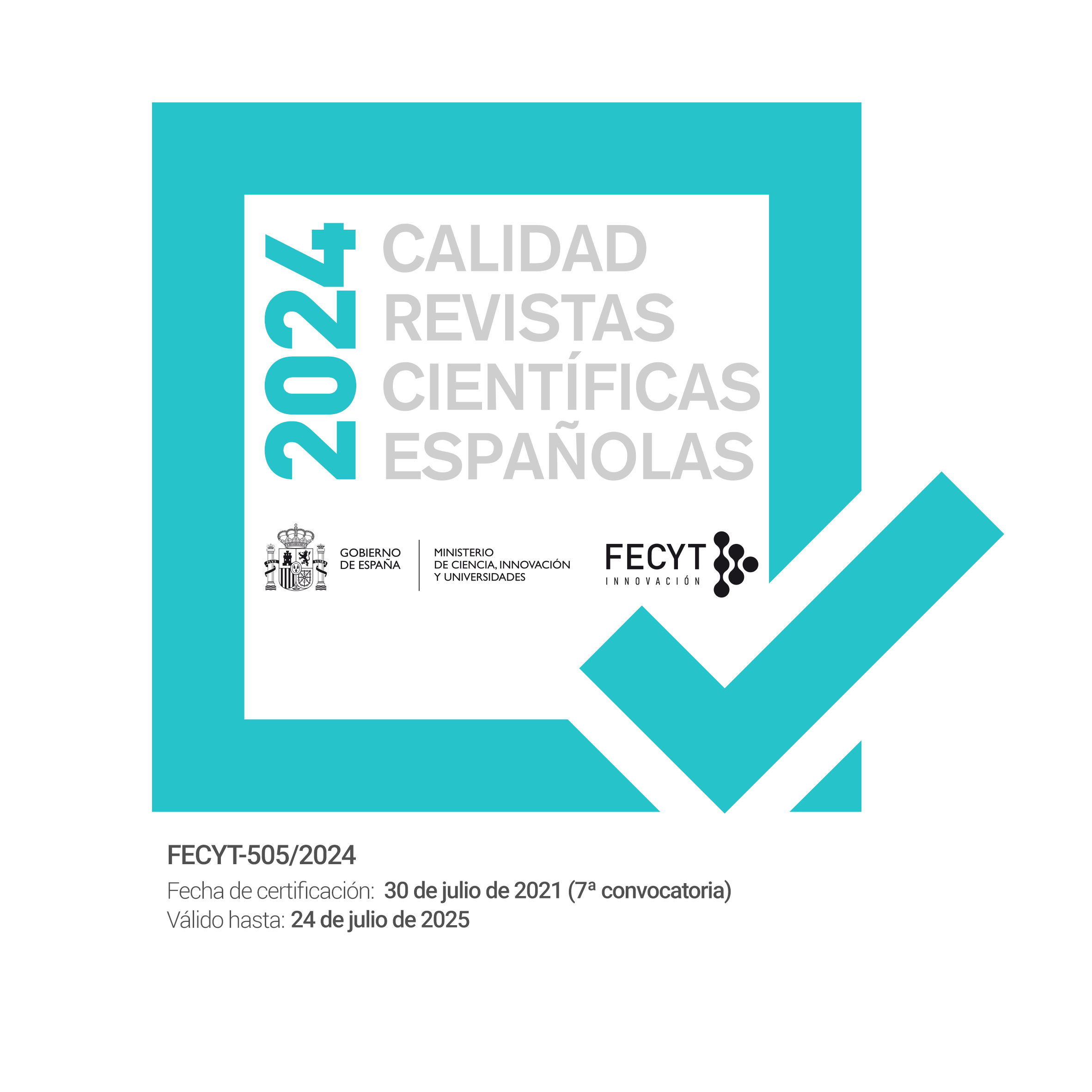El debat sobre l'estructura causal de la teoria evolutiva: lleis, forces i analogies
DOI:
https://doi.org/10.7203/qfia.8.1.20655 Resumen
Resumen
Resum: Aquest article analitza l’estructura de la teoria evolutiva i les discussions produïdes als seu voltant en les últimes dècades. En primer lloc, presente l’anomenada “interpretació de forces” o “analogia newtoniana” i la seua estructura basada en l’elaboració de tres lleis fonamentals. Més endavant, mostre les crítiques a aquesta interpretació per diferents autors, en especial l’anomenada “versió estadística” de la teoria evolutiva. Posteriorment, analitze la idoneïtat de la interpretació de forces i elabore una reformulació de la mateixa que permet explicar el seu sorgiment i la seua utilitat dins de la literatura biològica.
Abstract: This article analyses the structure of evolutionary theory and the debates emerged in the last decades regarding its causal status. First, I present the so-called “force interpretation” or “Newtonian analogy”, and its structure based on three fundamental laws. Second, I outline several criticisms on this interpretation, specially by the so-called “statistical view” of evolutionary theory. Finally, I analyse the suitability of the force interpretation and elaborate a new formulation of this interpretation. This allows me to explain the emergence of this interpretation in the past and its current utility in the biological literature.
Paraules clau: teoria evolutiva, estructura causal, interpretació de forces, visió estadística, forces evolutives, equació de Price.
Keywords: evolutionary theory, causal structure, force interpretation, statistical view, evolutionary forces, Price equation.
 Descargas
Descargas
 Citas
Citas
Abrams, M. 2007, “How Do Natural Selection and Random Drift Interact?”, Philosophy of Science 74: 666-79.
Bateson, W. i Saunders, E. R. 1902, “The Facts of Heredity in the Light of Mendel’s Discovery”, Reports to the Evolution Committee of the Royal Society I: 125-60.
Beebee, H.; Hitchcock, Ch. i Menzies, P. (ed.) 2009, The Oxford Handbook of Causation, Oxford: Oxford University Press.
Bouchard, F. i Rosenberg, A. 2004, “Fitness, Probability, and the Principles of Natural Selection”, British Journal for the Philosophy of Science 55: 693-712.
Bourrat, P. 2019, “Evolution is about populations, but its causes are about individuals”, Biological Theory 14(4): 254-66.
Brandon, R. 2006, “The principle of drift: biology’s first law”, Journal of Philosophy 103(7): 319-35.
Brandon, R. 2010, “A non-Newtonian model of evolution: the ZFEL view”, Philosophy of Science 77(5): 702-15.
Brandon, R. i Ramsey, G. 2007, “What’s Wrong with the Emergentist Statistical Interpretation of Natural Selection and Random Drift?”, D. Hull i M. Ruse (ed.), Cambridge Companion to the Philosophy of Biology. Cambridge: Cambridge University Press, 66-84.
Caponi, G. 2004, “La navaja de Darwin”, Ludus Vitalis 12(22): 9-38.
Clatterbuck, H. 2015, “Drift Beyond Wright-Fisher”, Synthese 192: 3487-507
Clatterbuck, H.; Sober, E. i Lewontin, R. 2013, “Selection never dominates drift (nor vice versa)”, Biology and Philosophy 29: 1-16.
Corben, H. C. i Stehle, P. 1994 (2a edició), Classical Mechanics, Nova York: Dover.
Crow, J. i Kimura, M. 1970, An introduction to population genetics theory. Minneapolis: Burgess Publishing Company.
Darwin, Ch. 1859, On the origin of species, Londres: John Murray.
De Vries, H. 1904, Species and varieties: Their origin by mutation, Chicago: The Open Court Publishing Company.
Dobzhansky, T. 1951, Genetic and the Origin of Species (third edition), Nova York: Columbia University Press.
Dobzhansky, T. i Pavlovsky, O. 1957, “An Experimental Study of the Interaction between Genetic Drift and Natural Selection”, Evolution 11: 311-9.
Elena, S. F. i Lenski, R. E. 2003, “Evolution experiments with microorganisms: the dynamics and genetic bases of adaptation”, Nature Reviews Genetics 4: 457-69.
Fairbain, D. J. i Reeve, J. P. 2001, “Natural Selection”, Ch. Fox, D. Roff i D. Fairbain (ed.), Evolutionary Ecology. Concepts and Case Studies, Oxford: Oxford University Press, 29-43.95
Filler, J. 2009, “Newtonian forces and evolutionary biology: a problem and solution for extending the force interpretation”, Philosophy of Science 76: 774-83.
Fisher, R. 1930, The genetical theory of natural selection, Londres: Clarendon Press.
Fontdevila, A. i Moya, A. 1999, Introducción a la genética de poblaciones, Madrid: Síntesis.
Forber, P. i Reisman, K. 2007, “Can there be stochastic evolutionary causes?”, Philosophy of Science 74(5): 616-27
Freeman, S. i Herron, C. 2007 (4a edició), Evolutionary Analysis, Londres: Pearson.
Fuchs, A. 2013, Nonlinear Dynamics in Complex Systems, Berlín: Springer.
Futuyma, D. J. 2013 (3a edició), Evolution. Sunderland: Sinauer.
Gildenhuys, P. 2011, “Righteous modeling: the competence of classical population genetics”, Biology and Philosophy 26(6): 813-35.
Gillespie, J. 2004 (2a edició), Population Genetics: A Concise Guide, Baltimore: The John Hopkins University Press.
Glymour, B. 2006, “Wayward modeling: population genetics and natural selection”, Philosophy of Science 73: 369-89.
Gould, S. J. 2002, The structure of evolutionary theory, Nova York: Belknap Press.
Haldane, J. B. S. 1932, The Causes of Evolution, Londres: Longmans, Green and Company.
Hartl, D. i Clark, A. 1997 (3a edició), Principles of population genetics, Sunderland: Sinauer.
Hitchcock, H. i Velasco, J. 2014, “Evolutionary and Newtonian forces”, Ergo 1(2): 39-77.
Huneman, P. 2012, “Natural selection: A case for the counterfactual approach”, Erkenntnis 76(2): 171-94.
Lande, R. i Arnold, S. 1983, “The measurement of selection on correlated characters”, Evolution 37: 1210-26.
Lewontin, R. 1970, “The units of selection”, Annual Review of Ecology and Systematics 1: 1-18.
Luque, V. J. 2016a, “Drift and evolutionary forces: scrutinizing the Newtonian analogy”, Theoria 31(3): 397-411.
Luque, V. J. 2016b, “The Principle of Stasis. Why drift is not a Zero-Cause Law”, Studies in History and Philosophy of Biological and Biomedical Sciences 57: 71-9.
Luque, V. J. 2016c, “From toys to games: overcoming the view of natural selection as a filter”, Kairos 17(1): 1-24.
Luque, V. J. 2017, “One equation to rule them all. A philosophical analysis of the Price equation”, Biology and Philosophy 32(1): 97-125.
Luque, V. J. 2018, “Is there room for a new foundation for the force interpretation?”, C. Saborido, S. Oms i J. González de Prado, Actas del IX Congreso de la Sociedad de Lógica, Metodología y Filosofía de la Ciencia en España, 353-7.
Lynch, M. 2007, “The Frailty of Adaptive Hypotheses for the Origins of Organismal Complexity”, PNAS 104: 8597-604.
Marshall, J. A. R. 2009, “The donation game with roles played between relatives”, Journal of Theoretical Biology 260: 386-91.
Matthen, M. i Ariew A. 2002, “Two ways of thinking about fitness and natural selection”, Journal of Philosophy 99(2): 55-83.
Matthen, M. i Ariew, A. 2005, “How to understand causal relations in natural selection: reply to Rosenberg and Bouchard”, Biology and Philosophy 20: 355-64.
Matthen, M. i Ariew, A. 2009, “Selection and causation”, Philosophy of Science 76: 201-24.
Maudlin, T. 2004, “Causation, counterfactuals, and the third factor”, J. D. Collins, N. Hall i L. A. Paul (ed.), Causation and counterfactuals, Cambridge: The MIT Press, 419-43.
McGhee, G. 2007, The Geometry of Evolution, Cambridge: Cambridge University Press.
McShea, D. i Brandon, R. 2010, Biology’s first law: the tendency for diversity and complexity to increase in evolutionary systems, Chicago: University of Chicago Press.
Millstein, R. 2002, “Are random drift and natural selection conceptually distinct?”, Biology and Philosophy 17(1): 33-53
Millstein, R. 2006, “Natural selection as a population-level causal process”, British Journal for Philosophy of Science 57(4): 627-53
Newton, I. 1846 [1687], The Mathematical Principles of Natural Philosophy, Nova York: Daniel Adee.
Okasha, S. 2006, Evolution and the levels of selection, Oxford: Oxford University Press
Okasha, S. 2008, “Fisher’s Fundamental Theorem of Natural Selection—A Philosophical Analysis”, British Journal for the Philosophy of Science 59: 319-51.
Orr, H. A. 2009, “Fitness and its role in evolutionary genetics”, Nature Reviews 10: 531-9.
Otsuka, J. 2016, “Causal foundations of evolutionary genetics”, British Journal for Philosophy of Science 67: 247-69
Otsuka, J.; Turner, T.; Allen, C. i Lloyd, E. 2011, “Why the causal view of fitness survives”, Philosophy of Science 78(2): 209-24
Pence, Ch. 2017, “Is Genetic Drift a Force?”, Synthese 194(6): 1967-88.
Pigliucci, M. i Kaplan, J. 2006, Making sense of evolution: the conceptual foundations of evolutionary theory, Chicago: University of Chicago Press.
Plutynski, A. 2007, “Drift: A historical and conceptual overview”, Biological Theory 2(2): 156-67.
Razeto-Barry, P. i Frick, R. 2011, “Probabilistic causation and the explanatory role of natural selection”, Studies in History and Philosophy of Biological and Biomedical Sciences 42: 344-55.
Reisman, K. i Forber, P. 2005, “Manipulation and the Causes of Evolution”, Philosophy of Science 72: 1113-23.
Rice, S. H. 2004, Evolutionary Theory: Mathematical and Conceptual Foundations, Sunderland: Sinauer.
Rosenberg, A. i Bouchard, F. 2005, “Matthen and Ariew’s Obituary for Fitness: Reports of Its Demise Have Been Greatly Exaggerated”, Biology and Philosophy 20: 343-53.
Roughgarden, J. 1996, Theory of Population Genetics and Evolutionary Ecology: An Introduction, Upper Saddle River: Prentice Hall.
Roughgarden, J. 1998, Primer of Ecological Theory, Upper Saddle River: Prentice Hall.
Ruse, M. 1973, The Philosophy of Biology, Londres: Hutchinson
Sarkar, S. 2011, “Drift and the causes of evolution”, P. Mckay, F. Russo i J. Williamson (ed.), Causality in the Sciences, Oxford: Oxford University Press, 444-69.
Shapiro, L. i Sober, E. 2007, “Epiphenomenalism: the do’s and the don’ts”, G. Wolters i P. Machamer (ed.), Thinking about causes: from Greek philosophy to modern physics, Pittsburgh: University of Pittsburgh Press, 235-64.
Skipper, R. i Dietrich, M. 2012, “Sewall Wright’s Adaptive Landscape: Philosophical Reflections on Heuristic Value”, E. Svensson i R. A. Calsbeek (ed.), The Adaptive Landscape in Evolutionary Biology, Nova York: Oxford University Press, 16-25.
Sober, E. 1984, The Nature of Selection, Cambridge: MIT Press.
Stephens, Ch. 2004, “Selection, drift, and the ‘forces’ of evolution”, Philosophy of Science 71(4): 550-70.
Stephens, Ch. 2010, “Forces and Causes in Evolutionary Theory”, Philosophy of Science 77(5): 716-27.
Stoltzfus, A. i Cable, K. 2014, “Mendelian-Mutationism: The Forgotten Evolutionary Synthesis”, Journal of the History of Biology 47: 501-46.
Templeton, A. R. 2006, Population Genetics and Microevolutionary Theory, Nova Jersey: Wiley.
Tenaillon, O. 2014, “The Utility of Fisher’s Geometric Model in Evolutionary Genetics”, The Annual Review of Ecology, Evolution, and Systematics 45: 179-201.
Wagner, G. P. 2010, “The measurement theory of fitness”, Evolution 64(5): 1358-76.
Walsh, D. 2007, “The pomp of superfluous causes: the interpretation of evolutionary theory”, Philosophy of Science 74: 281-303.
Walsh, D.; Lewens, T. i Ariew, A. 2002, “The trials of life: natural selection and random drift”, Philosophy of Science 69(3): 429-46.
Walsh D. M.; Ariew, A. i Matthen, M. 2017, “Four Pillars of Statisticalism”, Philosophy and Theory in Biology 9 (20170609).
Williams, G. C. 1992, Natural selection: domains, levels, challenges, Oxford: Oxford University Press.
Woodward, J. 2003, Making Things Happen: A Theory of Causal Explanation, Oxford: Oxford University Press.
Wright, S. 1931, “Evolution in Mendelian populations”, Genetics 16: 97-159.
Descargas
Publicado
Cómo citar
-
Resumen390
-
PDF (Català)295
Número
Sección
Licencia
![]()
Las obras publicadas en Quaderns de Filosofia se encuentran bajo la licencia de Creative Commons Reconocimiento-NoComercial-SinObraDerivada 4.0 Internacional.
Los autores que publican en esta revista están de acuerdo con los siguientes términos:
- Los autores conservan los derechos de autor y garantizan a la revista el derecho de ser la primera publicación del trabajo al igual que licenciado bajo una Creative Commons Attribution License que permite a otros compartir el trabajo con un reconocimiento de la autoría del trabajo y la publicación inicial en esta revista.
- Los autores pueden establecer por separado acuerdos adicionales para la distribución no exclusiva de la versión de la obra publicada en la revista (por ejemplo, situarlo en un repositorio institucional o publicarlo en un libro), con un reconocimiento de su publicación inicial en esta revista.
- Se permite y se anima a los autores a difundir sus trabajos electrónicamente (por ejemplo, en repositorios institucionales o en su propio sitio web) antes y durante el proceso de envío, ya que puede dar lugar a intercambios productivos, así como a una citación más temprana y mayor de los trabajos publicados (Véase The Effect of Open Access) (en inglés).





